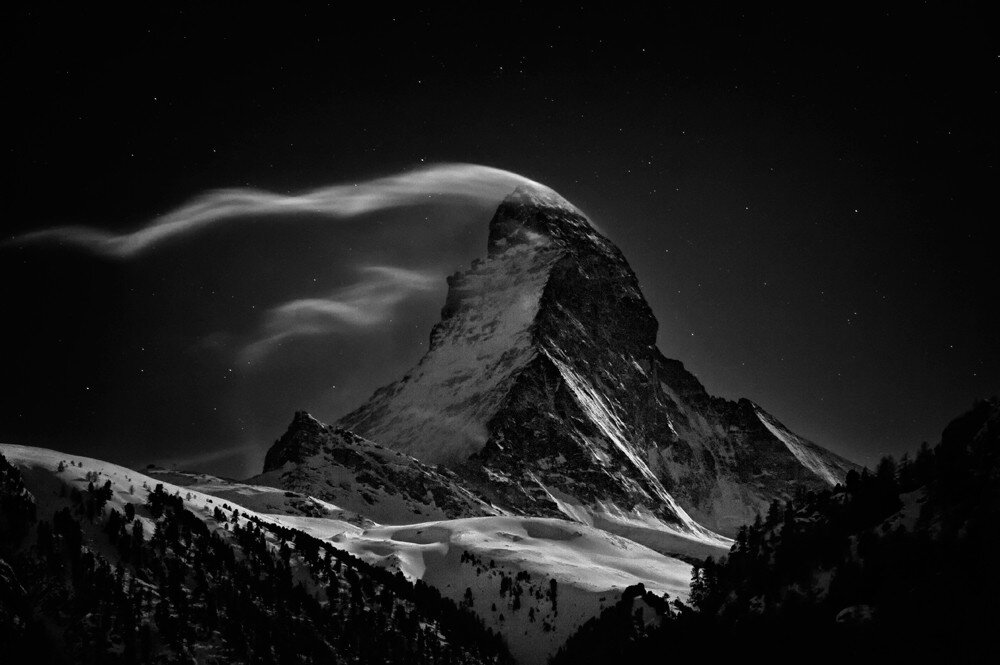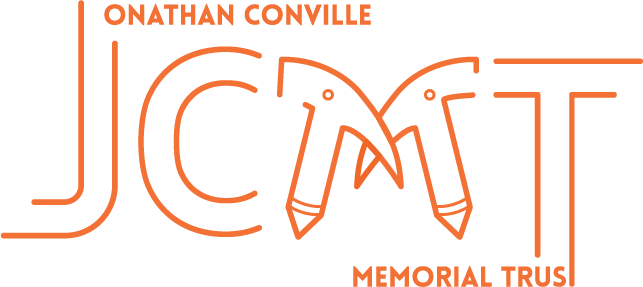
Jonathan’s Story
An indomitable spirit: adventurous and resolute in forging his own path.
Early Life
Jonathan Conville was born on the 2nd of December, 1952 in London, England.
The oldest child of Michael and Anne Conville, Jonathan was followed by two younger sisters, Katrina, born five years after him and Melissa, born a further two years later.
Jonathan attended Northaw boarding school from the age of seven, before progressing to Marlborough College and the Anglo-American College. He found the rules and structure of school life confining, but both his creativity and his passion for the outdoors shone through from an early age. His childhood friend Andrew Don, (Trustee of JCMT), remembers him as fearless “in the best sense of the word” and that he excelled in every sport he turned his hand to.
School was never a good fit for Jonathan and, immediately upon graduating, he took a gap year, setting off for the Himalaya to start exploring mountainous terrain. He backpacked around Nepal and India, getting a feel for the high peaks and beginning to ask the question: “What does it look like from the summit?” A love of high places was born.

The Army & The Mountains
After returning to the UK, Jonathan joined the army, enlisting in the Parachute Regiment.
His squad mates nicknamed him ‘The Giant’ in recognition of both his imposing height and outsized personality. Jonathan strove to be the best at every physical test, his boundless energy propelling him to the front of the pack. But his enthusiasm could border on the reckless and his contemporaries in the army recall the time an ambulance was called after Jonathan injured himself trying to climb a 100ft. flagpole for a bet.
When Jonathan finished in the military, he took part in the Loch Eil Group Outward Bound Course in Scotland and began to learn the skills that would set him on the path to becoming a climber. The experience also helped to crystalise something for Jonathan – that his calling was to teach outward bound activities, that in the outdoors he could find an outlet and a vocation for his passions.

In September of 1979, he enrolled in the I.M. Marsh College of Physical Education, in the pursuit of teaching and instructor training, but due to his untimely death he only completed one term.
The principal recalls that his level of fitness was second to none. He trained hard, running 5 miles every evening from the college to Liverpool University to use the climbing wall and weights room, before running the 5 miles back. But fitness and enthusiasm alone are not sufficient tools for the mountaineer; an understanding of terrain, practical skills, a respect for the mountain environment and good decision-making abilities are just as important.
After the Loch Eil training course, Jonathan had begun climbing in earnest, pursuing ever-more challenging adventures. That desire to always push himself further physically was now focused onto his mountaineering objectives.
He climbed the west face of the Aiguille de Blaitiere (pictured), the north face of the Petit Dru and the Mont Blanc du Tacul. It seemed he was never happier than when he was climbing and Jonathan made regular trips to the Alps, often staying in Les Chosalets Campsite in Argentiére where Trust students now stay.

The Matterhorn
In December 1979, Jonathan, along with his climbing companion, made the decision to climb the north face of the Matterhorn.
The pair chose to attempt the mountain via this route which required both high levels of technical skill, route-finding ability, and commitment. The face has few opportunities for protection and there is serious risk of avalanche during the winter months.
After six hours of climbing on Christmas Day, Jonathan and his partner bivouac and wait out the night in the brutal cold. The next day they climb to within 500 metres of the summit, the weather changed dramatically and they lost some of their supplies. They made the decision to get across to the emergency Solvay hut, where rescue might be possible if they sheltered and waited for the weather to clear.
It was a treacherous traverse, and they decided to abseil first, then climb to the hut. The large rock they used as an anchor appeared safe and Jonathan’s partner descended first while Jonathan remained above. The rock underneath Jonathan detached and fell 700m to the glacier below. His friend could not hear or see anything, but succeeded in making it to the hut.
Jonathan however, was gone.

Discovery & Legacy
That night, listening to the news near London, Anne Conville hears that there has been an accident in Switzerland involving two climbers.
When she contacts the police in Zermatt, they confirm that, while his climbing partner survived the accident, Jonathan has been lost. His body is not found and Anne continues to write for years, looking for a resolution to this tragedy. At the same time, Jonathan’s father and uncle pour themselves into the foundation and running of the Trust – determined to spare other families from the heartbreak they have experienced.
Many years later, in August 2013, some remains are discovered on the glacier below the north face and Jonathan’s sisters, Katrina and Melissa, submit DNA samples. The body is confirmed to be Jonathan’s.
His memorial Stone stands in the Climbers’ Graveyard in Zermatt, where his ashes are now also interred.
Climbing and mountaineering are dangerous pursuits. They come with inherent risks. But they also offer the opportunity for tremendous personal growth, reward and the potential for a lifetime of enjoyment. Had things been different, it is possible that climbing would have offered a life and a career to Jonathan, who had found it so difficult to direct his energy and talents in other areas. There is value in the pursuit of mountaineering as a vocation and for pleasure. While risk can never be completely eliminated, with education, preparation, experience, and practice, it can be reduced. That is our work in Jonathan’s memory – equipping young people with the skills they need to make informed decisions in the mountains, empowering them to develop, grow and safely pursue their passion.
Let me go climb these virgin snows,
Leave the dark stain of man behind,
Let me adventure and heaven knows-
Grateful shall be my quiet mind.
Wilfrid Noyce






